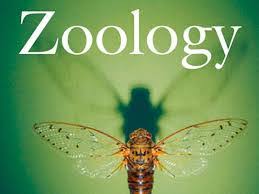W.B.C.S. Examination Notes On – Modes Of Life In Polychaetes – Zoology Notes.
Polychaete, any worm of the class Polychaeta (phylum Annelida). About 8,000 living species are known. Polychaetes, which include rag worms, lugworms, bloodworms, sea mice, and others, are marine worms notable for well-defined segmentation of the body.Continue Reading W.B.C.S. Examination Notes On – Modes Of Life In Polychaetes – Zoology Notes.
Unique among annelids, most polychaete body segments bear a pair of parapodia (flat, lobelike outgrowths) with setae, or tiny bristles. Polychaetes vary in size from a few millimetres to about 3 m (10 feet) and are divided informally into two groups; the errantia, or free-moving forms, and sedentaria, or tube-dwelling forms.
The head has short sensory projections (palps) and tentacles. The body is often brightly coloured. The diet consists of minute aquatic plants and animals in some species, while others are purely carnivorous.
The sexes are usually separate; sperm and eggs are discharged directly into the water, where fertilization occurs. Larvae are ciliated and free-swimming. As in some mollusk species, the early larvae are trochophores. Some polychaete species are hermaphroditic (i.e., the functional reproductive organs of both sexes are present in one individual); other species reproduce by budding, in which a portion of an adult’s body breaks away to form a new individual.
Polychaetes play an important role in turning over bottom sediments in the sea. The palolo worm (q.v.) is used as human food in areas of the South Pacific where it swarms in great abundance at breeding time. Other species are used by humans as bait for fishing.
PLANKTONIC POLYCHAETES
Planktonic polychaetes swim near the surface of the sea where the danger of predators and solar radiation is excessive. They generally have semitransparent body that imparts them near invisibility. Some have large eyes while others have none. Parapodia are small and locomotion is by lateral undulation of body. Cirri are generally longer as they carry tangoreceptors and help in locating food. Ex. Vanadis and Tomopteris.
CRAWLING POLYCHAETES
Crawling polychaetes belong to order Errantia which includes marine, freely moving animals that crawl on sea bottom. Head bears sense organs such as eyes, tentacles and palps. Locomotory organs or parapodia bear setae which can be retracted and protruded out in various directions for crawling among rocks and stones. Sense organs on prostomium and peristomium are well developed due to the free swimming and crawling habit.
Errant forms are carnivorous that feed on small molluscs, crustaceans, sponges etc. The raptorial feeding is performed by eversible pharynx which is provided with chitinous jaws and dentacles on the internal lining. Ex. Nereis, Aphrodite, Polynoe, Eunice etc. In Aphrodite the body is short and broad with arched dorsal side and a flat ventral side to permit creeping under the stones and crevices. Body is covered with stiff and iridescent setae for protection.
BURROWING POLYCHAETES
Many polychaetes, such as Nereis crawl on the seabed in night in search of food and burrow in the soil in day time. But polychaetes, such as Arenicola, Glycera, Amphitrite and Terebella spend most of the time in burrows and come out only to capture pray or for ingesting detritus. In these animals, for burrowing mode of life the external surface of body has become smooth and parapodia have become small to give minimum friction during burrowing. Their setae have become hook-like to anchor in the burrow. In Arenicola posterior part of body is without parapodia and tentacles and palps are also reduced because of mud-ingesting habit. However, in Amphitrite and Terebella there are long feeding tentacles on the anterior end and bunches of gills for respiration.
TUBICOLOUS POLYCHAETES
Tubicolous polychaetes live permanently inside the tubes made of mud, shell or sand grains, parchment or calcium carbonate. Tubicolous annelids are capable of secreting mucous or other adhesive substance to which sand and shell particles get attached and make the tube strong, e.g. Pectinaria, Owenia, Diopatra, Clymenella, Sabella.
In these animals water current carries micro-organisms inside the burrow and then tentacles move the food towards the mouth. Sometimes a mucous cone is produced from mouth to trap food particles.
In Chaetopterus the parapodial setae become peg-like or hook-like for anchoring the animal to the wall of the tube and water current is maintained by three fan-like appendages. Feeding is done by the peristomial funnel, mouth, ciliated groove and three fans on segments 14-16. A cone of mucous is secreted on the anterior side for trapping food particles.
Sabella or the peacock worm lives in vertical parchment tube and projects the fan-like tentacles which are covered with sticky mucous to which the minute food particles get attached and are carried to mouth through the ciliated groove.
In Myxicola, the gill filaments are joined by a thin sheet and form a semicircle at the apex, in which food is captured. Parapodia are lost or reduced or modified for anchoring in the tube. Sense organs are also reduced.
Serpula and Spirorbis possess glands that secrete Calcium carbonate for making a hard tube inside which the worm lives. Its anterior part of body and tentacles can be projected out to collect planktonic food particles on which it feeds.
Please subscribe here to get all future updates on this post/page/category/website


 +919674493673
+919674493673  mailus@wbcsmadeeasy.in
mailus@wbcsmadeeasy.in







































































































